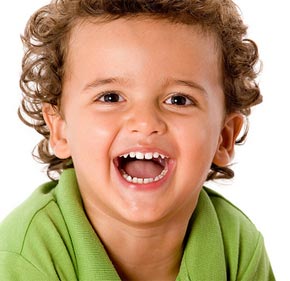A good experience at a child’s first trip to the dentist is vitally important in shaping their future behavior at dental visits. When a child’s first time at a dental office is to relieve the pain of a toothache, that can greatly affect their future perceptions of the dentist and produce fear and behavior management issues. Therefore, it is important to make the first appointment for a cleaning and checkup around the child’s third birthday.  The days leading up to the first visit should be filled with stories about the fun, exciting trip to the dentist that is coming up. If a parent has a fear of the dentist, they should be careful to not project that fear on to the child. Kids are more perceptive than you think. The parents need to make sure that big brother doesn’t fill the patient with needless horror stories. And they shouldn’t ever say things like “If you don’t behave, I’m going to take you to the dentist.” At our office, we try to make every trip to the dentist a fun adventure with cartoons playing on TV’s in the ceiling, good tasting toothpastes and fluorides, and trips to the treasure chest afterwards. Having a pleasant experience at the first dental will help alleviate apprehension at future dental appointments.
The days leading up to the first visit should be filled with stories about the fun, exciting trip to the dentist that is coming up. If a parent has a fear of the dentist, they should be careful to not project that fear on to the child. Kids are more perceptive than you think. The parents need to make sure that big brother doesn’t fill the patient with needless horror stories. And they shouldn’t ever say things like “If you don’t behave, I’m going to take you to the dentist.” At our office, we try to make every trip to the dentist a fun adventure with cartoons playing on TV’s in the ceiling, good tasting toothpastes and fluorides, and trips to the treasure chest afterwards. Having a pleasant experience at the first dental will help alleviate apprehension at future dental appointments.
Tag Archives: Child’s Dental Fear
Children’s Fear of the Dentist
 Many factors can contribute to a child’s fear of the dentist. On top of that list is a bad experience at a previous dental appointment. The younger the age, the higher likelihood that a child will have a fear of the dentist. It has even been shown that parents can pass along their own fear of the dentist. Children are very perceptive and can sense that a parent is stressed when talking about a dental visit. I employ a number of techniques to help allay a child’s fear. We have TV’s in the ceiling with cartoons playing which helps distract the child. Just something as simple as using a gentle, friendly voice and a smile can also put the child at ease. The “tell-show-do” technique works great. I tell them about the “water sprayer” that will flush out all of the “cavity bugs”, then I will take the dental hand piece and spray water on their hand so that they can see that there is nothing to fear. Then, for the “do”, I touch the anesthetized tooth which produces a gentle vibration so that they can see that there is no pain. And speaking of the numbing process, they are never shown the needle. They just get a little “pinch” to put the tooth to sleep. By employing just a few simple techniques can greatly reduce a child’s fear of the dentist and make it a pleasant experience.
Many factors can contribute to a child’s fear of the dentist. On top of that list is a bad experience at a previous dental appointment. The younger the age, the higher likelihood that a child will have a fear of the dentist. It has even been shown that parents can pass along their own fear of the dentist. Children are very perceptive and can sense that a parent is stressed when talking about a dental visit. I employ a number of techniques to help allay a child’s fear. We have TV’s in the ceiling with cartoons playing which helps distract the child. Just something as simple as using a gentle, friendly voice and a smile can also put the child at ease. The “tell-show-do” technique works great. I tell them about the “water sprayer” that will flush out all of the “cavity bugs”, then I will take the dental hand piece and spray water on their hand so that they can see that there is nothing to fear. Then, for the “do”, I touch the anesthetized tooth which produces a gentle vibration so that they can see that there is no pain. And speaking of the numbing process, they are never shown the needle. They just get a little “pinch” to put the tooth to sleep. By employing just a few simple techniques can greatly reduce a child’s fear of the dentist and make it a pleasant experience.
